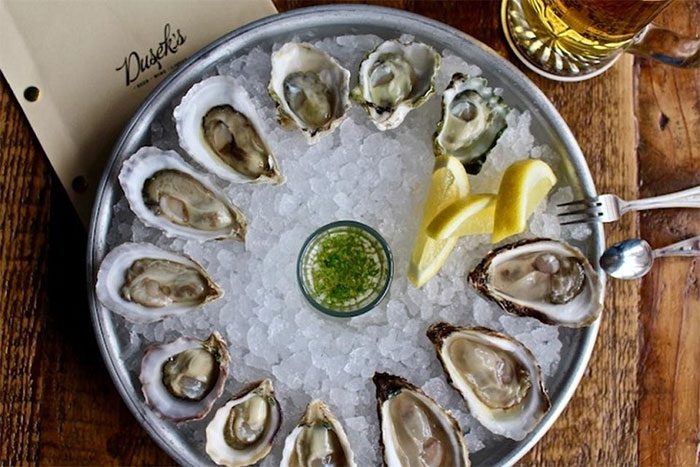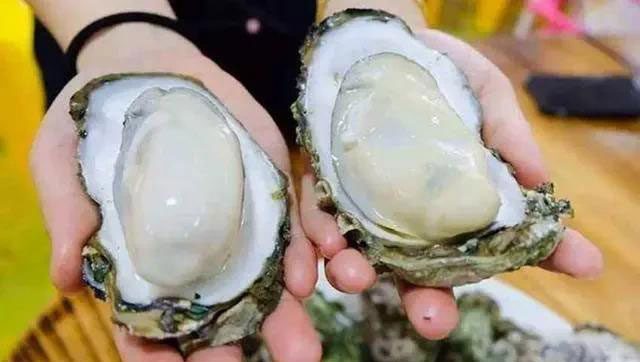According to nutrition experts, there is no scientific basis to suggest that cooked oysters are less nutritious than raw ones.
Nutritional Value of Oysters
Oysters are rich in zinc, various digestive enzymes, vitamins (D, B12, B1, B2, B3, C), and minerals (iron, copper, potassium, phosphorus) that are beneficial for the body; notably, they contain a high level of omega-3 fatty acids. A medium-sized oyster contains about 5.3 mg of zinc. Therefore, oysters are excellent food for adults and children, especially men. Furthermore, the body cannot synthesize omega-3, so it is crucial to obtain it through the daily diet.
Additionally, vitamin B12 is also abundant in oysters. A serving of six oysters can provide five times the daily requirement of B12 for an average person. B12 plays an important role in the nervous system, and a deficiency can increase the risk of depression or dementia, such as Alzheimer’s disease.
Associate Professor Nguyen Thi Lam, former Deputy Director of the National Institute of Nutrition, stated that oysters, like many other seafood, are rich in zinc, which is essential for everyone. The reason is that zinc is related to over 200 enzymes in the body.
Oysters also serve as a good source of protein, containing all nine essential amino acids required by the body. Moreover, oysters are high in antioxidants.

Only eat raw oysters if you are sure they are safe.
Many people prefer to eat raw oysters because they believe they are more nutritious than cooked ones; however, Professor Lam advises that one should only eat raw oysters if they are sure they are safe. “There is no scientific evidence showing that cooked oysters or seafood are less nutritious than raw ones,” she emphasized.
Moreover, lemon, wine, or mustard served with oysters do not have any antibacterial effect. Therefore, it is essential and safer for health to consume only cooked oysters. Cooking them at temperatures above 90 degrees Celsius for at least 90 seconds will kill most bacteria and viruses that cause illness.
Zinc in food has a certain durability; when stored properly, the zinc content remains nearly intact for 3-6 months.
“Instead of eating them raw, you can cook them to prevent diarrhea, food poisoning, and parasitic infections from these seafood, especially considering food safety conditions in Vietnam,” Professor Lam said.
Additionally, since oysters consume food from various areas, it is challenging to avoid contamination. Therefore, it is advisable to purchase oysters from reputable sources.
Aside from oysters, other seafood such as shrimp, crabs, fish, beef, and dark leafy vegetables are also rich in zinc. However, all foods have their benefits and potential risks when consumed improperly, whether too little or too much. Thus, it is essential to use a variety of foods wisely, combining both animal and plant-based sources in each meal for a balanced and nutritious diet.
Common Mistakes When Eating Oysters
Eating Oysters in Summer
Avoid consuming oysters from warm waters during summer, from May to August, as high temperatures create ideal conditions for bacterial growth. Oysters from cold waters typically take three to four years to mature, thus offering better flavor and texture. Cold-water oysters will taste good year-round.
Serving Raw Oysters on Ice
A tray of raw oysters piled high on ice can create an attractive effect for a dinner table; however, the temperature difference can spoil the flavor of this delicacy. The top part of the oyster will be at room temperature, while the part touching the ice may become frozen.

If dining at home, you can store oysters in the refrigerator until the party starts instead of displaying them on an ice tray. (Photo: Forbes).
Shucking Oysters Yourself
Once separated from their shells, oysters will die within six to eight minutes. This is why freshly harvested oysters have a truly impressive flavor. Europeans do not separate oysters from their shells. Therefore, if you want to enjoy the freshest oysters, ask the chef to leave them in their shells.
Eating Oysters with Sauce
Premium cold-water oysters are often of special size and flavor. You will taste the briny sea salt, a hint of sweetness, and even a slight acidity. However, all those flavors will disappear in mignonette sauce (a sauce made with shallots and red wine vinegar). Seafood restaurants often have various spicy sauces, mignonette, or horseradish sauce (which is spicier than wasabi). Chef Rico suggests that diners should use these sauces with oysters from warm waters or skip the sauce altogether to “enjoy oysters in the most natural way.”
Drinking Alcohol
A light glass of champagne pairs well with oysters. However, the flavor of this seafood is enhanced by a more robust wine. The art lies in splashing a bit of wine onto the oyster and then rinsing the inside of the shell with the wine again for the final sip.
Tips for Buying Oysters
Choose Oysters with Round, Thick Shells
Most people tend to choose large, visually appealing oysters when shopping, thinking that these will contain more meat. However, such oysters may not necessarily be meaty and fatty. Sometimes, what you see is merely the shell of the oyster, not the meat spilling out.
Therefore, when selecting oysters, look for those with round, full, and thick shells. This is a characteristic of oysters that contain more meat and are also fattier.

Look for individual oysters with smooth, shiny shells, not rough or barnacled…
Opt for Individual Oysters with Smooth, Shiny Shells
Oysters are born on the sandy sea floor and often attach themselves to small rocks or heavier objects. When harvesting oysters, many fishermen pry the oysters along with the rocks attached to sell them, leading buyers to believe they’ve purchased more oysters than they actually have.
To save money when buying oysters and to choose the ones you prefer, seek out individual oysters with smooth, shiny shells that aren’t rough or surrounded by other debris.
Avoid Buying Oysters Soaked in Water
The most concerning thing when buying seafood is excess water, but oysters are not fish, so they don’t need to be soaked in water. Therefore, if you see oysters being soaked in water at the market, it is best not to buy them.
This could easily be oysters that have been sitting around for too long and are no longer fresh, with the seller trying to deceive buyers. Choose oysters that are displayed cleanly on ice trays.
Do Not Buy Pre-Shucked Oysters
Do not trust sellers to prepare oysters for you in advance and sell bags of shucked oysters. Oysters are only fresh when their meat is still inside the shell. Purchasing pre-shucked oysters does not ensure that the seller has cleaned them properly, and sometimes opening the shells to extract the meat may not be hygienic. Moreover, when eating pre-shucked oysters, their meat is often mushy and lacks the firmness of fresh oysters still in their shells.


















































